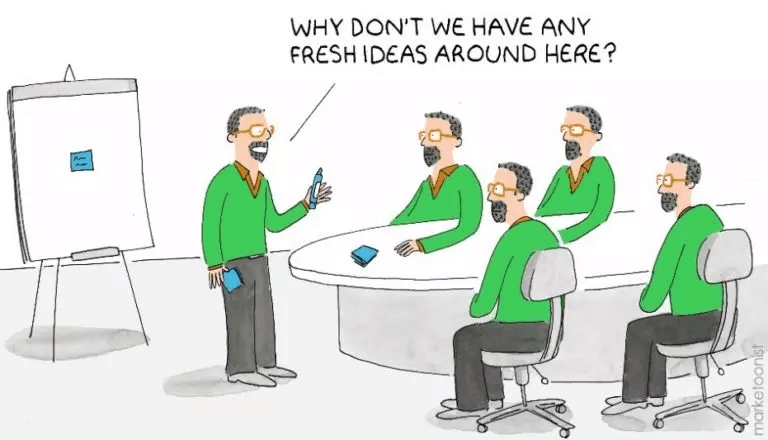What I Learned From the Stanford Certificate in Innovation & Entrepreneurship

The Stanford Certificate in Innovation and Entrepreneurship is pitched at Silicon Valley start-ups and businesses, however, it can teach us ways to recognize opportunities for change in schools and break away from the way things have always been done in education. Here are some ideas about how to find inspiration and lead innovation applied to the schooling context.
How to Find Inspiration
When we think about finding inspiration in education we might think of self-reflection or collaboration with cool colleagues (like when the person down the hall takes one of your lesson ideas and makes it better) or talking less and listening more carefully to people who challenge us or making more of an effort to surround ourselves with people we admire (even on social media). We can also be inspired by our students.
If it is the job of an innovator to have good ideas, the simplest way to get lots of good ideas is to seek different perspectives. There is no such thing as a new idea, just new combinations, so deliberately seek out unexpected combinations and collaborators who have a different perspective. We know that diverse teams are smarter. Diversity increases performance. So, if we want schools to innovate, one of the simplest ways may involve hiring more female leaders and more culturally diverse leaders. Often, the demographics of school leaders do not match the gender and cultural diversity of the student community. The Sydney Morning Herald recently reported that women are missing on the boards of Sydney’s top private schools. Gender diversity has become a significant leadership issue at these schools. Diverse school leadership teams improve school performance, increase innovation, and provide more creative approaches to problem-solving.
As this Harvard Business Review article explains:
“In a nutshell, enriching your employee pool with representatives of different genders, races, and nationalities is key for boosting your company’s joint intellectual potential. Creating a more diverse workplace will help to keep your team members’ biases in check and make them question their assumptions. At the same time, we need to make sure the organization has inclusive practices so that everyone feels they can be heard. All of this can make your teams smarter and, ultimately, make your organization more successful, whatever your goals.”

Leading Innovation
Research into leading innovation in schools has found that the principal is a key influence and often demonstrates a ‘restlessness for improvement’, there is a shared risk-taking school culture and pride in doing things differently – ‘bias towards innovation and action’, and leadership is broadly distributed. Australian educator Hedley Beare wrote the following:
“Enterprises which thrive in the information-rich economy tend to image their personnel in new ways. The enterprise and its members are flexible, they can make quick and strategic decisions, they encourage innovation and entrepreneurship; they value creativity rather than conformity, they give members the power to take local decisions and to exercise initiative, and they regard the people in the organization as partners rather than property.
Creativity, continuous improvement, and the ability to turn ideas into action are critical for schools. Creativity is just doing new things with old things. Breakthrough ideas usually occur when concepts from one field meet new, unfamiliar territory. Creative people live and thrive at the intersection of ideas. When we combine creativity with implementation, we get innovation.
There is a difference between managing routine work (where you can’t allow failure) versus innovative/creative work (where it has to be safe to fail for rapid learning). Bob Sutton shows that managers often overestimate their value and bosses often lack self-awareness. However, a hallmark of good bosses is that they are highly aware of this.
“They realise their followers watch, analyze, and react to just about everything they say and do. And they devote real energy to reading expressions, noting behaviors, and making constant adjustments to help their people think independently and express themselves without reservation. The best bosses are people who realize that they are prone to suffering blind spots about themselves, their colleagues, and problems in the organization — and who work doggedly to overcome them.”
Being a boss is like being a high-status primate: the animals under you in the pecking order observe everything you do and they know much more about you than you know about them. Studies of baboons show that a member looks at the alpha male every 20 or 30 seconds.
The best managers manage by getting out of the way. Innovative leaders devote less attention, don’t require people to ask for permission, and don’t enforce rules consistently. 3M’s William Coyne is famous for stating, “After you plant a seed in the ground, you don’t dig it up every week to see how it’s doing.” The best leaders protect their people from harm, intrusions, and distractions. This decades-old legend about a brave shielding act still inspires people at Pixar.
The best diagnostic question to assess leadership in innovative schools is “What happens when people fail?” There is no innovation or learning without failure. Great leaders forgive and remember because failure sucks but it instructs.
Takeaway Questions
- How do you seek different perspectives and actively work to build diverse teams?
- What happens when people fail in your school?
For more, see:
- How To Unblock Curiosity And Build Creativity
- Getting Smart Podcast | 21 Insights: Adventures in Learning to Lead
Cameron Paterson is a Getting Smart Staff Writer and is the Director of Learning and Teaching at Shore School in Australia. Follow him on Twitter: @cpaterso
Stay in-the-know with innovations in learning by signing up for the weekly Smart Update.







0 Comments
Leave a Comment
Your email address will not be published. All fields are required.